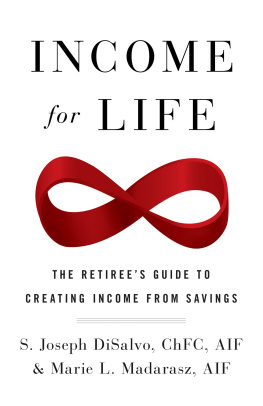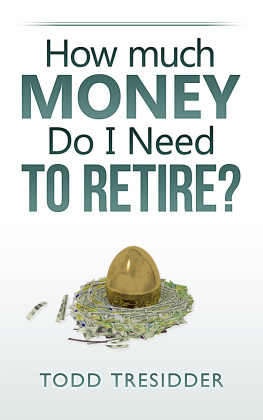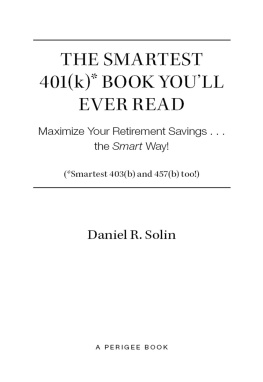Cover image: lassedesignen
Cover design: Kaylee Conrad
Cover art direction: Doug Carter
Copyright 2013 by Stig Nybo and Liz Alexander, Ph.D. All rights reserved.
Published by John Wiley & Sons, Inc., Hoboken, New Jersey.
Published simultaneously in Canada
No part of this publication may be reproduced, stored in a retrieval system, or transmitted in any form or by any means, electronic, mechanical, photocopying, recording, scanning, or otherwise, except as permitted under Section 107 or 108 of the 1976 United States Copyright Act, without either the prior written permission of the Publisher, or authorization through payment of the appropriate per-copy fee to the Copyright Clearance Center, 222 Rosewood Drive, Danvers, MA 01923, (978) 750-8400, fax (978) 646-8600, or on the web at www.copyright.com . Requests to the Publisher for permission should be addressed to the Permissions Department, John Wiley & Sons, Inc., 111 River Street, Hoboken, NJ 07030, (201) 748-6011, fax (201) 748-6008, or online at www.wiley.com/go/permissions .
Limit of Liability/Disclaimer of Warranty: While the publisher and author have used their best efforts in preparing this book, they make no representations or warranties with the respect to the accuracy or completeness of the contents of this book and specifically disclaim any implied warranties of merchantability or fitness for a particular purpose. No warranty may be created or extended by sales representatives or written sales materials. The advice and strategies contained herein may not be suitable for your situation. You should consult with a professional where appropriate. Neither the publisher nor the author shall be liable for damages arising herefrom.
For general information about our other products and services, please contact our Customer Care Department within the United States at (800) 762-2974, outside the United States at (317) 572-3993 or fax (317) 572-4002.
Wiley publishes in a variety of print and electronic formats and by print-on-demand. Some material included with standard print versions of this book may not be included in e-books or in print-on-demand. If this book refers to media such as a CD or DVD that is not included in the version you purchased, you may download this material at http://booksupport.wiley.com . For more information about Wiley products, visit www.wiley.com .
Library of Congress Cataloging-in-Publication Data:
Nybo, Stig.
Transform tomorrow : awakening the super saver in pursuit of retirement readiness/ Stig Nybo with Liz Alexander, Ph.D.
pages cm
Includes bibliographical references and index.
ISBN 978-1-118-53736-7 (hbk. : alk. paper) ; ISBN 978-1-118-57463-8 (ebk); ISBN 978-1-118-57282-5 (ebk); ISBN 978-1-118-57274-0 (ebk)
1. RetirementUnited States. 2. Retirement incomeUnited StatesPlanning. I. Alexander, Liz. II. Title.
HQ1063.2.U6N93 2013
306.380973dc23
2012041907
This book is dedicated to my father, Gregory Peter Nybo, who passed away during the final editing of this book. Not only was he a caring father and a wise man, he was a writer, a teacher, and was the catalyst for this book. Thanks dad ; -) we miss you!
Foreword
We often hear, and use, the phrase retire with dignity. According to the Oxford English dictionary, dignity means the quality or state of being worthy, honored, or esteemed. I believe therefore that to retire with dignity is doing so with more than just the minimum needed to get by. It is doing so with a certain level of self-respect, being able to maintain the necessities, at a minimum, and hopefully able to afford a few niceties as well.
As a fellow member of the retirement industry, one who has spent much of his career learning and understanding what isand is nothappening in the world of retirement savings, Stig Nybo believes the same thing. In these pages, he presents a call to action to encourage all to help Americans secure their retirement. Transform Tomorrow helps put clarity around the questions: what exactly do we mean by a dignified retirement, and how are we helpingand can we helpAmericans get there?
Only by knowing where we have come from can we move forward. These pages provide a context of how our retirement plan, and 401(k) system, got to where it is today, and identify the misconceptions that Americans must overcome to understand how best to move forward.
For example, why is 65 the traditional retirement age, and were Americans so much better off years ago with defined benefit (traditional pension) plans? Although I grew up seeing both of my grandfathers end their careers having worked for one company most of their decades of employmentproviding them with full pensionsthat actually was not the experience of many. Job hopping is not a new phenomenon, and for all the talk about the death of pensions, in fact, Stig points out, coverage of Americans by retirement plans is actually more common now.
And yet we are faced with a dismal savings rate, longevity increases that might lead to people spending more time in retirement than they did working, and a lack of financial education and literacy.
Where will this lack of savings get us? As one adviser to retirement plans often notes in her preretiree seminars, there is a lot more cat food sold in Florida than there are cats to eat it. Now, that is a somewhat disturbingand perhaps hyperbolicexample, but it is true that a lack of savings can mean even the most basic needs are threatened.
Therefore, as Transform Tomorrow says, we need a national initiative to change that. By recognizing this massive social issue and putting the right context around it, Stig has created a message not just for the retirement industry, but for the country as a whole.
With the close to 10 years I have spent affiliated with Asset International, the publisher of PLANSPONSOR and PLANADVISER , publications focused on helping companies and advisers provide the best retirement programs they can to employees, I firmly believe that what we do matters. Helping companies offer a retirement savings vehicle to their employees is often the only way an American will begin to think about retirement savings.
However, as the years have gone on, I have been acutely aware that the messages that we focus on are all for nothing if we don't get one message rightthe need to save. As an industry, we've spent a lot of time and money trying to make Americans investors, instead of making them savers, and I do think that those of us who know better should be able to help those who don't.
As I constantly reiterate to members of my staff, I believe this is one of the largest social and public policy issues of our time. Regardless of what industry you work in and what position you hold, it is incumbent upon those of us who are aware of this issue to get behind this savings campaign initiative and do what each of us can to Transform Tomorrow .
Alison Cooke Mintzer
Global Editor-in-Chief, PLANSPONSOR ,
PLANADVISER , PLANSPONSOR Europe
Asset International, Inc.
New York, NY
Acknowledgments
When things got tough an old friend of mine would ask me, Stig, how do you eat an elephant? And then, before I could answer, he would always reply to his own question with a smile, One bite at a time. This has always made sense to me, and it is essentially how this book was written, one bite at a time. But as they say, the real truth often runs a little deeper and is found somewhere below the surface. If asked that same question today, my answer would be a bit different; it would simply be, Not alone. Why? Because in my 50 years, I've never accomplished anything worthwhile without a lot of help from others. This book was no exception.










